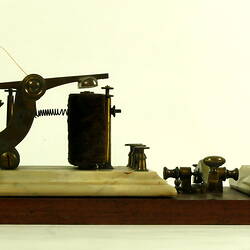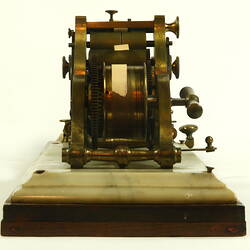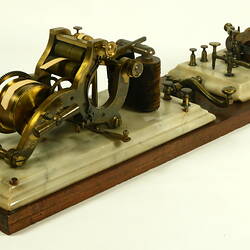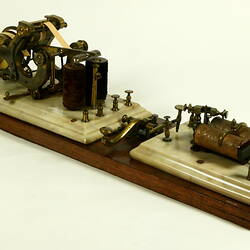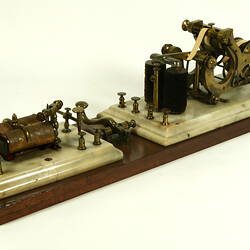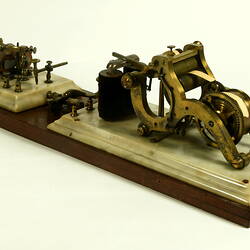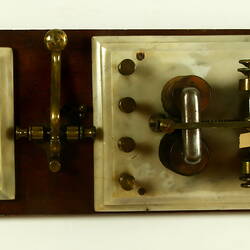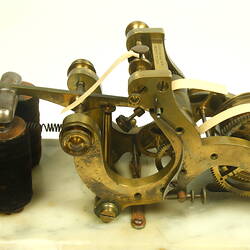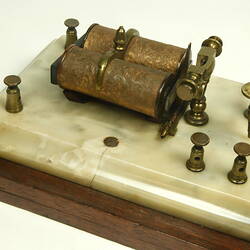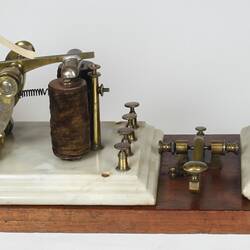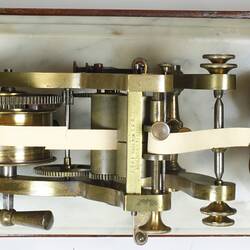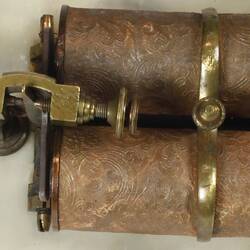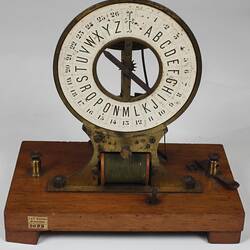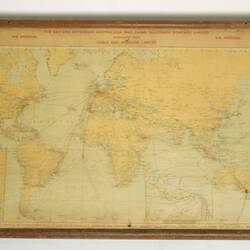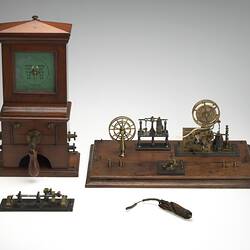Summary
Telegraph set comprising a telegraph key, a relay and a register.
The key was used for the transmission of signals in the Morse electric telegraph system. To transmit signals the operator depressed a pivoted metal lever (the key) to complete an electric circuit and transmit current along the telegraph line. Releasing the key broke the circuit and cut off the current. Letters and numbers were represented by a sequence of short and long current pulses, transmitted according to a defined code. The most widely used code was generally known as "Morse code".
At the receiving end the sequence of current pulses activated the relay which in turn connected a battery to the register. The register displayed the received signals as long and short marks embossed on a moving paper tape. The operator could also interpret the signals by the sound of the register operating mechanism. The register was driven by falling weights.
Physical Description
Brass camelback key. Relay with horizontal coils, brass fittings and terminals, mounted on marble base. Register of embossing type, brass components, mounted on separate marble base. Key, relay and register all mounted on a common wooden baseboard. A length of paper tape is still in register.
More Information
-
Collection Names
-
Collecting Areas
-
Acquisition Information
Donation from (Estate of) Mr John J. Thompson, 27 Apr 1915
-
Date Made
-
Collector
Mr John J. Thompson, 12 Rose Street, Armadale, Greater Melbourne, Victoria, Australia, 27 Apr 1915
-
Inscriptions
On brass bar on top: 'CHARLES T & J.N. CHESTER / 232 NEW YORK 1857'
-
Classification
-
Category
-
Discipline
-
Type of item
-
Overall Dimensions
660 mm (Length), 200 mm (Width), 200 mm (Height)
-
Keywords
Electrical Relays, Morse Keys, Morse Printers, Printing Equipment, Telegraph Equipment, Telegraphy


